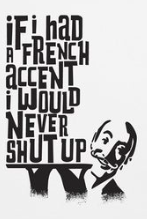Chers élèves, je peux à nouveau me connecter sur ma messagerie académique, vous pouvez donc m’envoyer votre travail sur ce media à nouveau !
- HERE IS A LIST OF QUESTIONS TO HELP YOU COMMENT A PICTURE, WRITE THEM IN YOUR English book.
INTRODUCTION :
1 MENTION THE ISSUE : IS THIS PICTURE A CARICATURE OR PROPAGANDA ?
2 What is the nature of the document ?
3 Is it a colour/black and white picture ? a photo ? a drawing ? an illustration ? a poster ? a statue ?
4 Who created it ? (Give a few facts about the artist)
5 Where was it published ? Where was it first exhibited ? Is this important ? Does it mean anything ?
6 What was the historical/political/sociological context ?
DESCRIPTION
7 What can you see ?
8 What are the meaningful elements ? What do they mean ? What is their effect ?
9 Define propaganda /caricature with essential elements
10 Write your conclusion : is the document propaganda or caricature ? justify your answer.
- Here is the document that is my example :

- The question is : is this document propaganda or caricature ?
- This is a poster. It was glued on walls for people to see in the streets.
- It is red, white and black, and very colourful.The lines are simple and clear.
- There is no name on it, which means we do not know who made it, but many artists were employed by the Ministry of propaganda during World War II.
- Posters were supposed to be seen by people in the streets, or large pictures were published in newspapers. They were seen by large numbers of people.
- During World War II, the war effort in Great-Britain was enormous, and the population largely participated in it.
- There is a large face with a big ear that is out of proportion. Adolf Hitler is easy to recognize : his moustache is a very personal and conspicuous feature, his hair is also very distinct. There is also a slogan in white at the top: « careless talks costs lives ». « Mr Hitler wants to know » is written in large black letters in the middle. At the bottom, there is a text about the data that is important in the war, and that is valuable both to the Allies and to their enemies, and that was essentially army plans and organisation. In the text at the bottom, there is a pun with the word « Führer » : Fuehrious instead of furious.
- The most important element is the ear, that corresponds to the fact that the Nazi Regime wanted to find intelligence (information) about the allied forces. Hitler did not have big ears. The ear on the poster corresponds to the message which is, basically : « do not talk to enemies ». People had to be careful who they talked to, and they had to beware of spies.
- Caricature is the exaggeration of a feature. As Hitler did not have large ears, so, this is not exactly a caricature. Propaganda is a system of information to manipulate people into believing in ideas or acting. The message of this poster was to spread fear of spies and strangers to protect the Allied Forces. Therefore, this is clearly propaganda, because its goal was to make people act in a special way. Moreover, this poster was issued by the Ministry of Information.
As a conclusion, governments often use propaganda to get citizens to act or believe in something. In democracies, it is mainly for a good cause, and this can be criticized by the opposition. During the current Covid -19 crisis, many governments have organised information and communication to protect people. It is also possible to expose this communication through the press.
- Look at the expressions in boldface letters. List them in your book and match them with the French translation. Try to use them as much as possible in your text.
- français (dans le désordre par rapport au texte…cherchez un peu 😉 :
de plus / pour cette raison/la problématique est/l’élément le plus important/caractéristique/en haut/au milieu/en bas/informations/il y a /ce qui signifie que/manipuler les gens pour qu’ils fassent quelque chose/manipuler les gens pour qu’ils croient à quelque chose/être censé …faire/publié/pour que les gens les voient/ en conclusion/la caricature consiste en l’exagération d’un trait…
